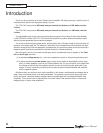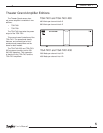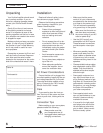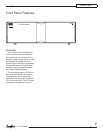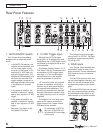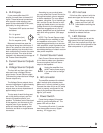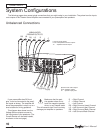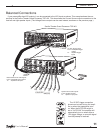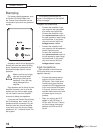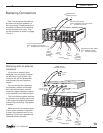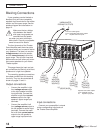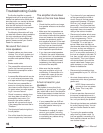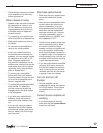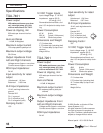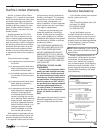
User's Manual
12
CHAPTER 2
For biamp-capable speakers, such
as Sunre's Cinema Ribbon line,
the Theater Grand Amplier can be
congured to provide a very powerful
system.
A speaker which can be biamped or
biwired will have two sets of binding
posts. Sometimes these posts are
joined with bridge clips for normal
operation.
Make sure that any bridge
clips are removed when
biamping or biwiring the
speakers. If not, this may
cause damage to the
amplier.
Each speaker can be driven by two
amplier channels; one to drive the
woofer and one for the upper range.
You will need to use four amplier
channels to biamp two speakers.
If you use the Theater Grand Ampli-
er for biamping, then a total of ve
speakers can be connected. You will
need an extra two channel amplier
if you want to run the surround back
speakers in a 7.1 channel Home The-
ater system.
Biamping
The following connections are
shown in the diagram on the top half
of the next page.
Output connections
• Connect the amplier’s right
rear output to the right speak-
er’s woofer input terminals.
Connect the amplier’s right
front current source output to
the right speaker’s upper range
input terminals. If you prefer,
you could use the right front
voltage source instead.
• Connect the amplier’s left
rear output to the left speaker’s
woofer input terminals.
Connect the amplier’s left
front current source output to
the left speaker’s upper range
input terminals. If you prefer,
you could use the left front
voltage source instead.
Input connections
Each amplier channel has two
RCA inputs which are connected
together internally.
• Connect the preamp stereo
output to the front channel
RCA jacks. Then install short
interconnects from the other
unused front RCA jacks across
to the rear channel RCA jacks.
In this way, the front and rear
amplier channels are fed with
the same signal from your
preamp.
• Note: you cannot use XLR
cables in, with RCA out, or
RCA in with XLR out. There is
no direct internal connection
between the RCA and XLR
inputs.



